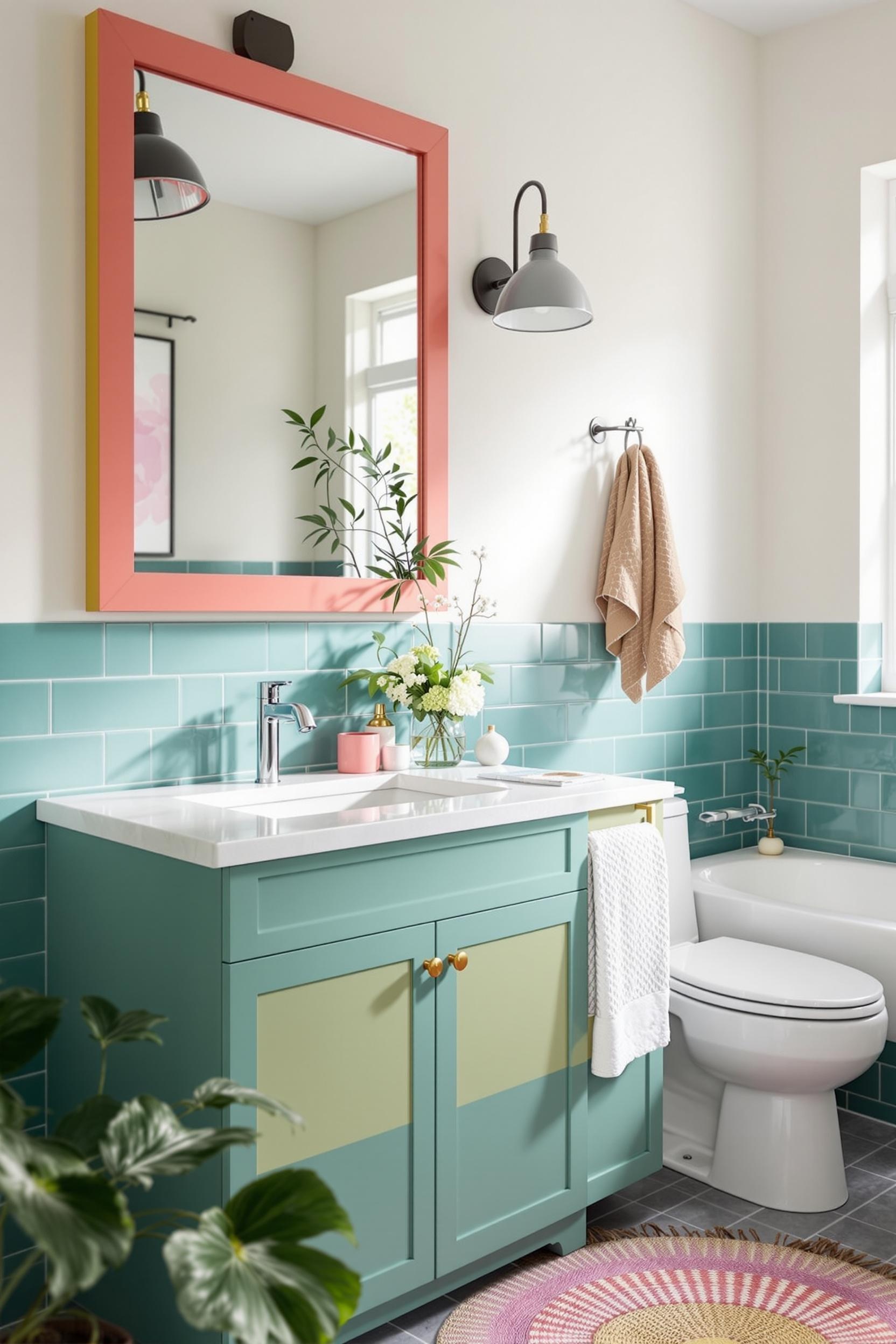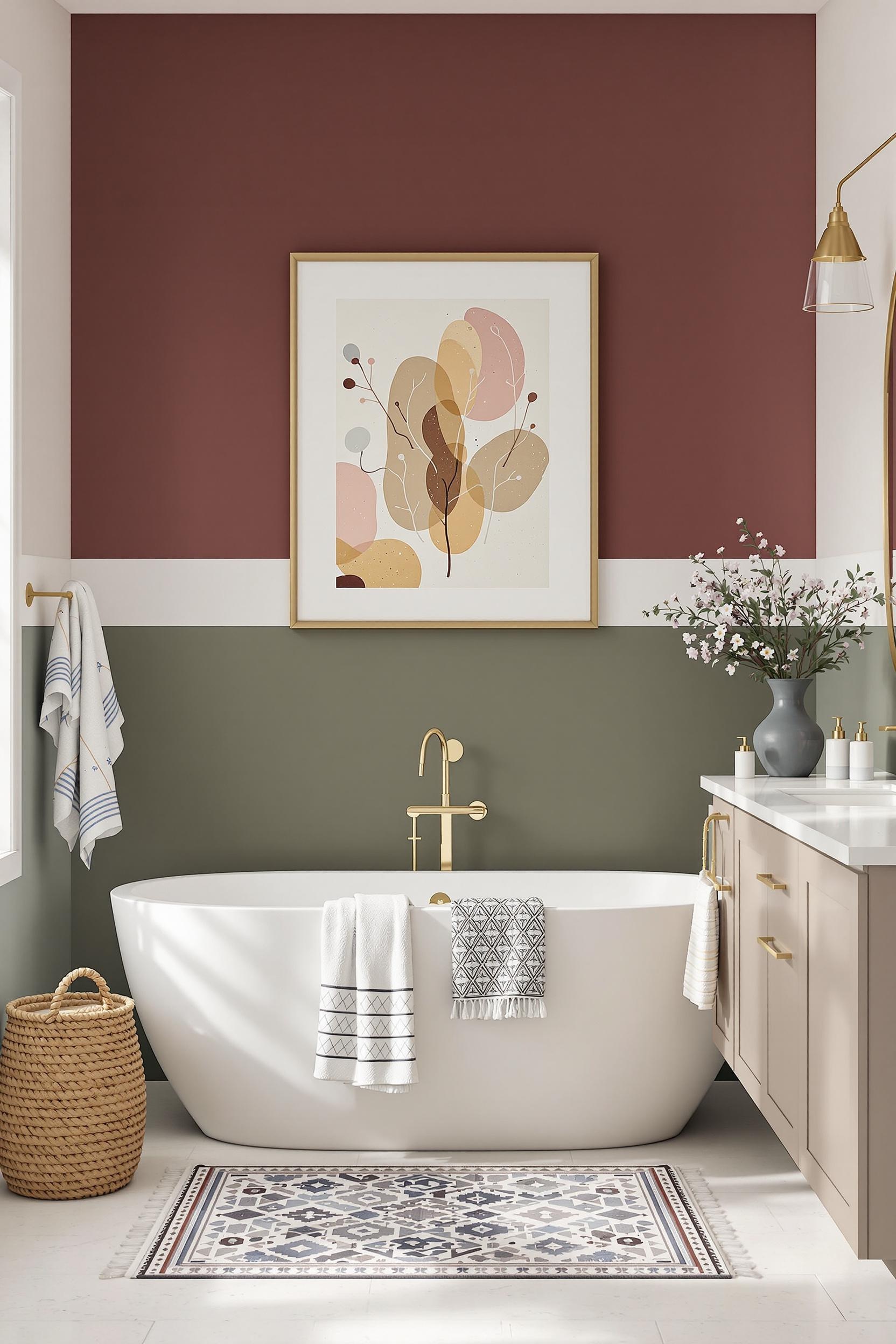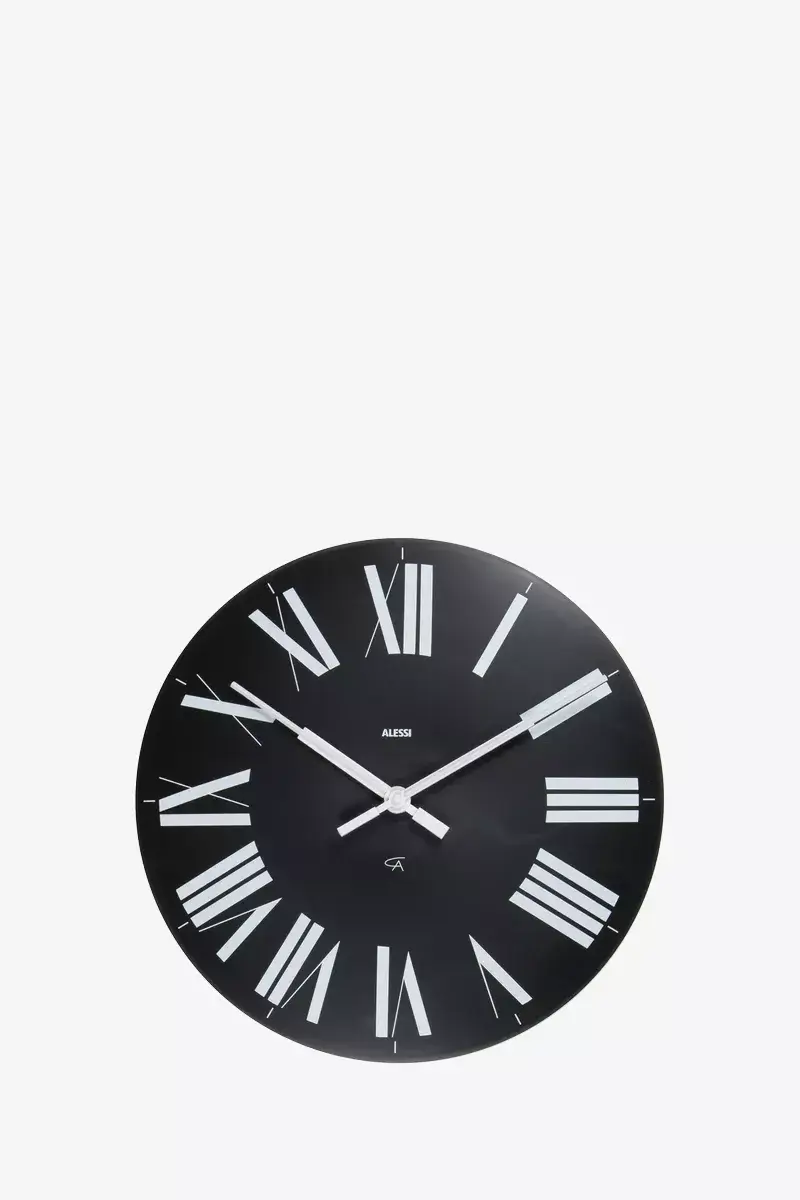
DIY Color Blocking: Transform Your Home with Bold Design Techniques
Have you ever walked into a room that instantly lifted your mood with its vibrant colors and dynamic layout? That’s the power of color blocking interior design—a technique where bold color zones, geometric patterns, and strategic placement create stunning, minimalist interiors. As a professional interior designer, I’ve helped homeowners use minimalist color blocking to inject personality into their homes—without sacrificing calm or cohesion. In this guide, I’ll show you exactly how to bring these DIY techniques into your walls, furniture, and accessories.
Whether you want to learn how to paint geometric color blocks on walls, try an easy DIY accent wall, or define open floor plans with color, this guide has everything you need. With tools, techniques, and easy-to-follow steps, you’ll discover how to make your space feel sleek, intentional, and vibrant.
Mastering Color Blocking: Essential Tools and Prep Techniques
Before grabbing a paintbrush, you’ll want to build your DIY toolkit for color blocking. Proper prep is the difference between average results and a professional-looking space. Here’s what I recommend:
- High-adhesion painter’s tape
- Laser level for straight lines
- Foam rollers and angled brushes
- Drop cloths and painter’s plastic for protection
Surface preparation is crucial. Clean and sand your wall. Then use primer. I always rely on a laser level to help tape out sharp geometric designs. Once your base is perfectly prepped, you’re ready for those high-contrast color zones.
Make sure to apply the 60-30-10 rule: use 60% of a dominant color (usually a neutral), 30% of a secondary shade, and a bold 10% pop for accents. For trending hues, check out my 2025 minimalist color blocking palette guide with soft pastels and rich, muted tones.
Geometric Color Blocking: Precision for Walls That Wow
Creating color block walls with geometric patterns isn’t reserved for pros. If you’re working on a DIY color blocking wall idea for a minimalist space, precision is your best friend. Start by mapping out your shape—whether it’s a diagonal line or bold rectangle—and tape it out using that laser level.
Want to make a ceiling look higher? Try vertical color blocking. Need to widen a narrow room? Horizontal blocks can stretch the visual field. If you’re working with a blank canvas like an open living room wall, don’t be afraid to go bold with split wall or angled blocks.
I’ve even helped clients maximize space through geometric color blocking, making small rooms feel expansive by focusing color where the eye travels most.
Expand Beyond Walls: Color Blocking Furniture Techniques
Color blocking isn’t just for walls—it works wonders on furniture. If you’re curious about how to color block furniture for interiors, start with dressers, beds, or nightstands. Paint drawer fronts bold colors and the frame in a muted tone to create dynamic contrast using the same 60-30-10 technique.
You don’t need to buy new furniture either—repurposing existing pieces is budget-friendly and eco-smart. I’ve used split color designs on bench frames, ombré shading on bookcases, and accent-painted color block nightstands to revitalize minimalist bedrooms.
Transform Every Room with Color Blocking
If you’re ready to color block your entire home, here are some ideas:
- Bathroom: Use color blocks around the vanity area for a spa-like focal point.
- Entryway: Try a half-wall color block behind a mirror or bench.
- Kitchen: Paint cabinet toe kicks or walls behind open shelves.
- Bedroom: Block behind the headboard for a bold contrast.
Not only does this technique visually define rooms—it helps organize open floor plan spaces without physical dividers. Using bold color zones to guide navigation also reduces visual clutter in minimalist designs. Even accents like rugs and curtains can carry blocks of color. See inspiration on how textiles contribute to color zoning.
Psychology Behind Color Blocking in Minimalist Interiors
Color does more than beautify. According to design researchers, colors evoke feelings: blue calms, yellow energizes, green balances. By blocking paint zones, you’re not just decorating—you’re creating an intentional emotional experience.
Filled with natural light and framed by clean lines, color blocking can help infuse biophilic warmth into minimal spaces. In fact, designers now use this technique to add texture along with color, helping rooms breathe and feel more human.
Color Blocking DIY: Frequently Asked Questions for Home Design Enthusiasts
Color blocking can seem intimidating at first. But it’s incredibly doable. As someone who’s both practiced and taught this method, here are the top questions I get:
What is color blocking?
It’s the use of distinct color sections—often with crisp, geometric patterns—to build bold, yet clean visuals. It helps define areas and builds aesthetic appeal in minimalist homes.
Is it hard for beginners?
Not at all. Use painter’s tape, a level, and DIY guides like mine to start with confidence.
Will color blocking work in small apartments?
Yes! Try vertical lines to add height, gradients to stretch walls, and mirrors near color zones. Learn more on making small rooms appear larger.
What’s the best color combo?
Stick to the 60-30-10 balance. For 2025, muted tones mixed with bold accents are on trend.
How much does it cost?
Under $200! Tape, paint, rollers, and a laser level are your main expenses.
Unlock Your Design Potential: Transform Spaces with Color Blocking Magic
Elevate Your Home: Color Blocking Design Challenge Starts Now
Color blocking isn’t just trendy—it’s transformative. It turns blank spaces into meaningful environments through intentional placement and striking contrasts. This technique is especially powerful for those living in small or minimal homes.
Your Color Blocking Design Transformation Toolkit
- Create structured visual layouts
- Shift emotional tones with color
- Craft personal narratives using palettes
- Maximize space functionality without tearing down walls
You don’t need to be a designer to succeed with this method. Your home just needs vision—and a willingness to experiment.
Join the Color Blocking Design Revolution
Ready to reimagine your home? Join our creative community, packed with inspiration, how-tos, and exclusive style tips. You’ll learn how to:
- Build sophisticated palettes
- Balance calm and bold design principles
- Transform everyday rooms into works of art
By subscribing, you’ll gain access to:
- Exclusive color blocking tutorials
- Monthly trend reports
- Early insights from industry pros
- Special minimalist printables and design plans
Ready to Start Your Color Blocking Journey?
Whether you’re giving a fresh face to your bedroom wall or transforming your open concept space, the opportunities to express yourself are truly endless. Let your home tell a story through bold geometry and brilliant hues—because great design starts with a single brushstroke.
Want exclusive tips, fresh ideas, and inspiration sent to your inbox?






